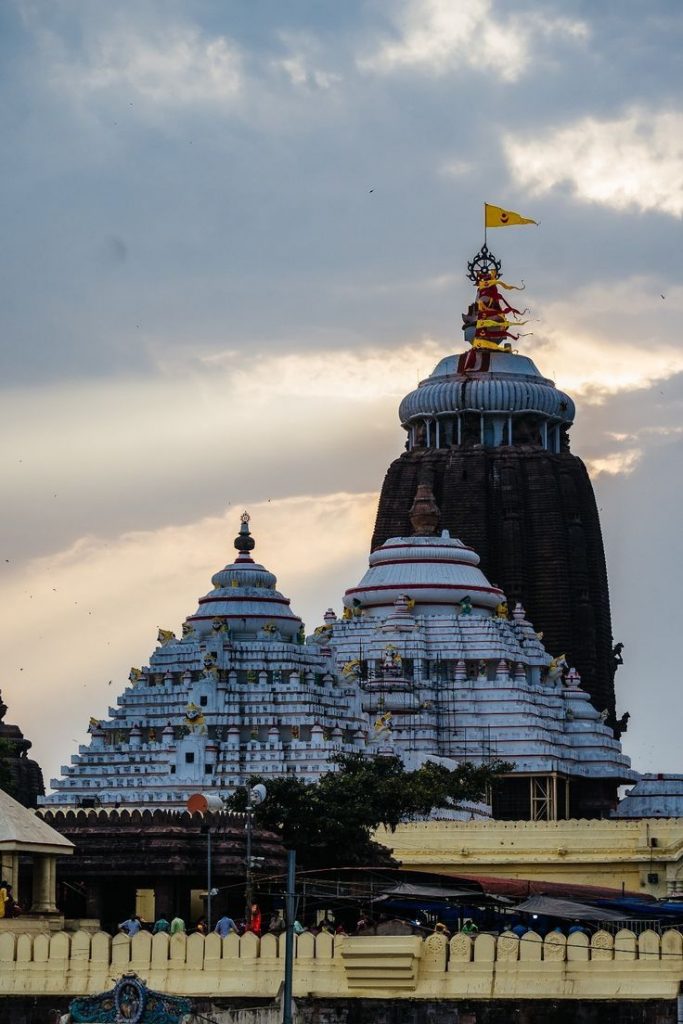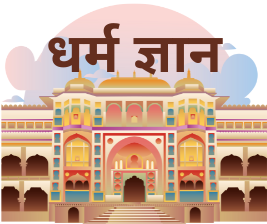
In the eastern littoral state of Odisha, nestled by the serene Bay of Bengal, lies a city that
seems to beat with a heart aged than time itself. This city Puri isn’t just a fleck on India’s
spiritual chart it is a godly realm that draws millions of addicts every time to the bases of Lord
Jagannath, the “ Lord of the Universe. ”
Puri is one of the Char Dhams — the four holiest passage spots in Hinduism, alongside
Badrinath, Dwarka, and Rameshwaram. To step bottom in Puri is to step into a place where
devotion isn’t an occasional practice, but a way of life.
Let’s take a trip through the history, spiritual substance, and artistic magic of Jagannath Puri,
and maybe, feel a little near to commodity lesser than ourselves.
The Divine Trinity of Puri Jagannath, Balabhadra, and Subhadra
At the heart of Puri lies the Jagannath Temple, a towering and majestic structure that seems to
touch the sky. But what truly makes it unique is the trio of divinities worshipped then — Lord
Jagannath, his elder family Balabhadra, and family Subhadra.
Unlike the usual gravestone icons set up in utmost tabernacles, the divinities in Jagannath
Temple are made of wood, drafted again every 12 – 19 times in a sacred ritual called
Nabakalebara, meaning “ new body. ” The process is both elaborate and mystical, involving
rituals kept secret and carried out only by select preachers.
Lord Jagannath’s form with large, suggestive eyes, a smile that seems eternal, and no visible
branches — represents a godly riddle. He’s believed to be a form of Lord Vishnu or Krishna,
yet he transcends specific individualities to come a symbol of universal divinity.
A Temple Like No Other
The Jagannath Temple, erected in the 12th century by King Anantavarman Chodaganga Deva,
is n’t just a place of deification — it is an architectural phenomenon filled with unsolved
mystifications
The Sudarshan Chakra at op the tabernacle is 20 bases altitudinous and weighs over a ton,
yet how it was placed there in the ancient period without ultramodern ministry remains a
riddle.
The chakra always faces you, no matter where you stand around the tabernacle — a miracle
still unexplained by wisdom.
Unlike utmost places near the ocean, no catcalls fly over the tabernacle, and the sound of the
ocean disappears as you step inside the tabernacle demesne.
The flag on the tabernacle is changed daily, an act done by a clerk who climbs the
tabernacle’s 214- bases-high shikhara( pate) barefoot — without any climbing gear — for
centuries now.
There’s a sacred energy in the tabernacle complex that can not be described, only felt.
Whether you’re a religionist or not, the air of the place envelops you in commodity profoundly
peaceful.
The Grand Rath Yatra – Festival of Chariots
Every time during the month of Ashadha( June- July), the city of Puri turns into a ocean of
devotion with the world- notorious Rath Yatra or Chariot Festival.
This is the only time in the time when the divinities come out of the sanctum and trip in massive
rustic chariots to the Gundicha Temple, a many kilometers down. These chariots are lately
erected every time, and the procession is accompanied by chants, music, dancing, and an
ocean of addicts pulling the ropes of the chariots, hoping to earn godly blessings.
The sight is stirring — Lord Jagannath’s chariot( Nandighosha), Balabhadra’s( Taladhwaja),
and Subhadra’s( Darpadalana) — each towering nearly 45 bases altitudinous and pulled by
thousands of hands in joyful rendition.
Legend says that those who share in pulling the ropes of the chariot admit moksha(
emancipation). Indeed the act of seeing the Lord in this public darshan is considered extremely
auspicious.
Jagannath and Krishna – A Divine Connection
Numerous believe that Lord Jagannath is a unique form of Lord Krishna in his most
compassionate and inclusive form. The story goes that after Krishna’s end, his heart remained
complete. That heart is said to be placed inside the hero of Jagannath during Nabakalebara,
emblematizing the eternal nature of godly love.
This belief is beautifully illustrated by the rounded form of the divinities — free from rigid mortal
features, representing the formless and each- embracing nature of God. It’s a form that accepts
all gentries, colors, and creeds without judgment.
The Mahaprasad – Divine Food for All
In Jagannath Puri, food isn’t just aliment it’s a sacred immolation.
The Mahaprasad of Jagannath Temple
is fabulous. Every day,
over 56 kinds of food are cooked in earthen pots over wood, in a
kitchen so large that it’s believed to be the biggest in the world.
Strangely, no matter how numerous pilgrims arrive at the tabernacle, the food noway runs
out. And formerly offered to Lord Jagannath, the Mahaprasad becomes holy, consumed by
everyone anyhow of estate or background — a living symbol of spiritual equivalency.
Pilgrims and locals gather together in the Anand Bazaar, sitting side by side on the ground to
partake in this godly mess. Eating Mahaprasad is considered a blessing equal to darshan of
the Lord.
A Town Bathed in Devotion
While the tabernacle is the spiritual core, the entire city of Puri radiates religious vehemence.
Walk through the narrow thoroughfares and you’ll hear the constant hum of bhajans( spiritual
songs),
the ringing of tabernacle bells, and see saffron- sheathe sadhus planning or singing
praises of Lord Jagannath.
Visit the Swargadwar Beach, believed to be the gateway to heaven, especially for those who
pass down then. numerous pilgrims take a dip in the ocean before visiting the tabernacle,
purifying their bodies and minds.
Original requests are full of monuments — bitsy icons , rustic busts of the trio, conch shells,
and globules. Every original has a story, a belief, a tradition tied to Lord Jagannath.
Universal Appeal Beyond Boundaries
What makes Jagannath Puri special is how inclusive and loving the deity is. He’s not confined
to any one group or belief. Historically, numerous saints across different traditions — Adi
Shankaracharya, Ramakrishna Paramhansa, Chaitanya Mahaprabhu, and Guru Nanak have
visited and sung praises of Jagannath.
Indeednon-Hindus have felt the magic of this place. It’s not about conversion or doctrine it’s
about connection. Lord Jagannath represents a godly energy that welcomes all campaigners,
no matter their background.
Planning a Trip to Jagannath Puri
still, then are a many tips
If you’re planning a passage or spiritual trip.
Stylish time to visit October to March is ideal for affable rainfall, but if you want to witness the
Rath Yatra, visit in June- July.
Where to stay Puri offers everything from budget dharamshalas tomid-range hospices and
luxury resorts near the sand.
near lodestones Don’t miss Konark Sun Temple, Chilika Lake, and Raghurajpur Craft Village.
Dress modestly, respect tabernacle customs, and be prepared for long ranges, especially
during carnivals.
In Conclusion The Jagannath puri
A Place That Transforms
Jagannath Puri isn’t just a city it’s a living evidence to India’s dateless church, a place where
godly love flows freely. Whether you’re deeply religious, mildly curious, or simply seeking peace,
Puri welcomes you with open arms.
Then, devotion is n’t tutored it’s felt. It seeps into your soul as you walk the sacred
thoroughfares, stand before the towering tabernacle, or peer into the soulful eyes of Lord
Jagannath.
You begin to realize that God is n’t far down, but maybe right then — in the joy of a
sucker’s song, in the taste of Mahaprasad, in the meter of the chariot bus.
Jagannath does n’t just live in the tabernacle. He resides in every heart that calls out in faith.
Wikipedia :- https://hi.wikipedia.org/wiki



Comments are closed.